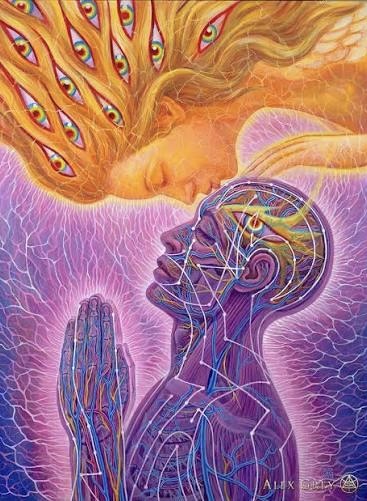It was a Tuesday night, the kind of late spring evening that isn’t quite warm yet but carries the conjuring of seasonal change. My best friend Dan and I merged onto Interstate 94 with purpose.
A mission. A destination.
The goal was simple: Tool’s long-awaited album Lateralus was being released at midnight and we would be among the first to hold it.
The parking lot outside the Down in the Valley in Maple Grove felt like a gathering of pilgrims with an edge. People leaned against car hoods and truck beds, hands wrapped around coffee or cigarettes, passing the time with quiet anticipation and spirited conversation. Some argued which album was Tool’s true masterpiece: Opiate, Undertow, or Ænima. We debated like Athenian philosophers disguised as metalheads. But these weren’t casual conversations—they were debates birthed of devotion. We committedTool fans are a strange tribe: obsessive enough to be loyal, patient enough to wait, and reverent enough to know something meaningful was about to happen.
At exactly midnight, the doors opened. Static-X was shaking the shelves. We stepped in, passed under the fluorescent hum, and there it was: the display wall. Rows of Lateralus, sealed in plastic. The spiral. The dark geometry. The hum of electricity from the artwork alone was staggering. Dan and I grabbed our copies and held them like sacred relics of gnosis.
Before streaming and Spotify flattened music into files, discovering a new album was a unique experience. You didn’t just listen—you opened it, entered a sonic chapel with symbolic stained-glas You read the lyrics. You studied the artwork. You opened the liner notes like a map.
And in those pages was the moment when I encountered the art of Alex Grey for the first time.
It felt like falling headlong into a dream. An explosion of colours that looked less like paint and more like truth. It didn’t feel designed. It felt…revealed.
I didn’t know it yet, but I had just discovered who would become my lifelong favourite artist.
Alex Grey is not just an artist—he is a visionary. His work walks a delicate line between inner experience and cosmic reality, between order and chaos, between creation and personal rapture. He paints the human being not as a body, but rather a luminous field of consciousness and divinity within the bodily vessel.
In his paintings, the physical and spiritual are reflected and reconciled. The inner self, often unseen or unacknowledged, is laid bare with reverence. Grey paints not just what we are, but what we have always been.

within the bodily vessel.”
American rock band Tool had artist Alex Grey design the album art for their 2001 album Lateralus. Much of Grey’s psychedelic art mixes geometric patterns with detailed human anatomy. – Submitted photo
Where most artists interpret the visible and tangible external world, Grey dares to map the internal one. Each piece carries emotional gravity. One doesn’t simply view his art—instead, they feel it happening to them.
For countless fans like me, Alex Grey arrived like a special and unannounced guest hidden inside Lateralus. He would collaborate with Tool again on 10,000 Days, their stage visuals, and the music video for “Parabola.”
But Grey should not only be defined by Tool. That collaboration was simply how many of us were introduced to him. It was appropriate though – initiation by means of music that already invited intensity, introspection, and evolution.
For me, Tool pointed toward the door; Alex Grey opened it.
Grey’s paintings feel familiar, even if you’re seeing them for the first time. There is something ancient about his work, as though these images already live inside us, buried in ancestral memory. Carl Jung would appreciate that they stir something we don’t know what asleep into a hurricane.
His major works include Net of Being, The Kiss, Interbeing, Oversoul, Collective Vision, Gaia, Kiss of the Muse, and his iconic Sacred Mirrors series. Each one is a journey, not an object. Each a portal, not a product.
His recurring themes are bold: unity of life, consciousness, birth and death, transfiguration, perception, and spiritual evolution.
His message is never dogmatic – it informs.
His art doesn’t lecture—it invites.
It doesn’t convert—it awakens.
It doesn’t seek out – it waits patiently for eyes that are ready.
Grey and his wife Allyson founded the Chapel of Sacred Mirrors in Wappingers Falls. Part gallery, part temple, part crucible for memory. It is a living piece of Grey’s vision: art as prayer and prophecy, a union of perfect opposites, and initiation to new ways of thinking.
Grey also continues to speak on art, spirit, and consciousness on The Joe Rogan Experience, the Aubrey Marcus Podcast, various TED Talks, as well as through his ongoing CoSM Podcast.
More than twenty years since that night in the parking lot with Dan. Twenty-four years since I peeled away the plastic and opened a doorway I didn’t know was there waiting patiently.
Music pulled me into that moment, but art transformed it.
I discovered my favourite artist. Not because of trend or hype. But because something in his work spoke the language of my soul. I made a quiet promise that night: someday, my home would hold art that matters. Art with meaning. Art that reminds me to stay awake. His art.
Alex Grey’s art has stayed by me ever since, a north star of consciousness and wonder.
Art doesn’t just decorate a home. It transforms it.
It doesn’t just reflect life. It reveals it.
The visible world is only half the story. Alex Grey? Well, he paints the rest.
Check out his beautiful work.
Look not with your eyes, but with the part of you that remembers.
Choose to be inspired, my friends. Every day.
– Robert Horton is an educator, author, orator, and linguist. He is a member of Rainy River First Nations.






